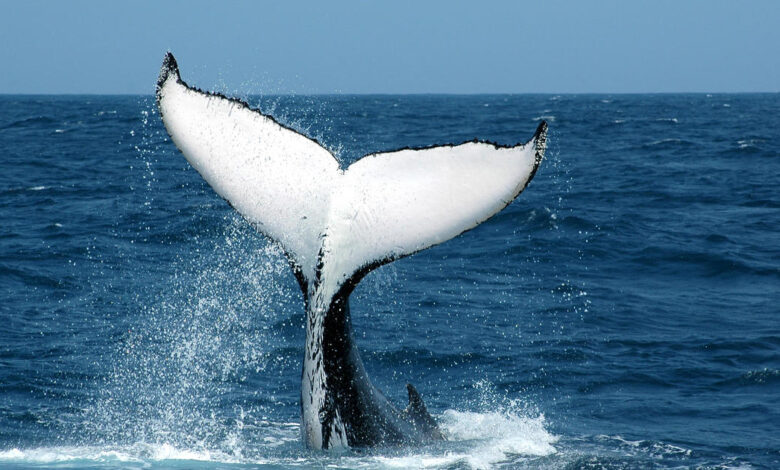Humpback whale makes one of the longest migrations ever recorded, scientists say

A male humpback whale made one of the longest and most unusual migrations on record for the species, an anomaly scientists say might be linked to climate change.
The whale was first sighted in waters off northwestern Colombia in July 2013, according to a study published Wednesday in the journal Royal Society Open Science on the creature’s movements and how to potentially explain them. Authors said that same whale was seen again four years later, in another spot off the Colombian coast about 50 miles away from the location of the first sighting.
An unlikely third encounter with the humpback happened in August 2022, when it was spotted off eastern Africa in a channel between Zanzibar and mainland Tanzania. The whale would have had to cross multiple oceans and travel more than 8,000 miles from the Colombian Pacific to get there, and experts believe it was trying to find a mate or food. The whale’s lengthy voyage set a record for the longest known migration between breeding grounds.
Sightings were tracked through photographs submitted by citizen scientists to happywhale.com, where marine enthusiasts, researchers and other professionals plot the locations and movements of whales worldwide.
Though humpbacks are among several species of whales known to migrate extraordinarily long distances each year to pursue sources of food in colder waters and breed in tropical seas, the study’s authors called the humpback’s behavior “atypical.” This whale’s crusade dwarfed even the longest transits reported by the National Oceanic and Atmospheric Administration, which notes in a description of humpback whales shared on its site that some populations are known to migrate as far as 5,000 miles in a single year.
The study said the long-distance movement was peculiar “and raises the question as to what its drivers are, which could include but not necessarily be limited to mating strategies.”
The whale’s penchant to explore an unexpected and faraway habitat could also have been rooted in environmental shifts caused by climate change, the authors said. Things like higher sea surface temperatures are impacting marine life around the world and could similarly affect distributions of krill in certain areas, which could in turn affect feeding grounds for humpbacks like the long-distance traveler.
Their study did note that more research is necessary to arrive at any conclusions about the whale’s migration pattern.
“On the other hand, population increases may also be a driver of these breeding ground shifts, when animals may need to explore new breeding and/or feeding areas due to competition from larger, more established males in both areas,” the authors wrote. “The exact cause or drivers of these breeding habitat shifts can only be speculated due to the current limited data availability on humpback whale behavioural ecology.”
CBS News reached out to one of the study’s authors for comment but did not receive an immediate reply.




